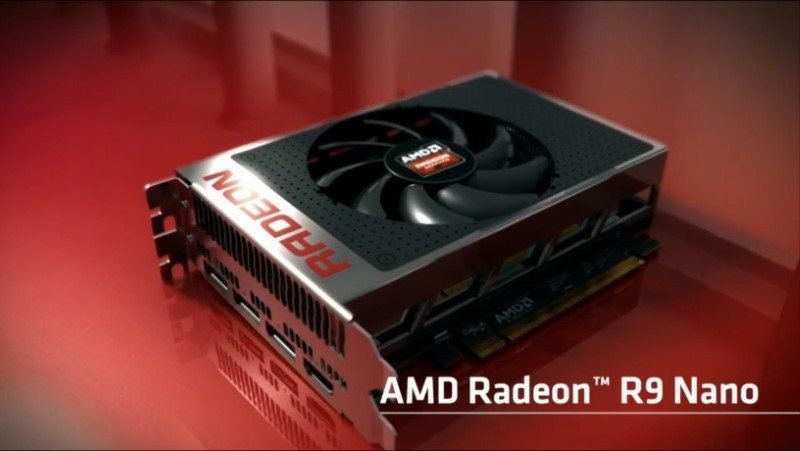AMD R9 Nano Performance Indirectly Revealed
Robert Ainsworth / 10 years ago

The AMD R9 Nano, a dinky little card that still packs a massive punch. It is said to pack 2x the performance per watt and 2x the performance density of AMD’s previous flagship card, the result being a 175 watt six-inch long beast of a graphics card.
We’re referring to Teraflops here when describing the “computer power” and how many this card achieves. It doesn’t always translate into gaming performance, but will give you a good idea.
How do we know the performance? Wccftech managed to apply some maths to the little amounts of data that AMD revealed to us. They used that cards TDP and performance per watt to work it out:
Since we know that performance per watt is FP32/TDP, we can go ahead and extrapolate the power efficiency of the R9 290X.
R9 290X’s peak FP32 = 5.6 TFLOPs, in other words, 5600 GFLOPs, and its TDP is 250W.
Perf/W = 5600 GFLOPs/250W = 22.4 GFLOPs/W
We also know that the R9 Nano has 2X the perf/watt of the R9 290X.
Which means it’s 2X (5.6TFLOP/250W)
= 2X 22.4 GFLOPs/W
= 44.8 GFLOPs/W.
Thus the perf/watt rating of the R9 Nano is 44.8GFLOPs/W.
Incidentally, we also have the TDP for the Nano, and that’s the last missing piece in the puzzle.
R9 Nano
Perf/watt = FP32 in GFLOPs (unknown) / TDP (175)
44.8 = FP32 (unknown) / 175
44.8 x 175 = FP32 (unknown)
44.8 x 175 = 7840 GFLOPs or 7.84 TFLOPs.
In summary, this means that the R9 Nano could pack a crazy 7.84 Teraflops in compute power. That’s more than a Titan X can give. If bitcoin mining was still financially feasible with graphics cards, this one would by far be the most popular. It will give out nearly twice the amount of gigaflops per second than the Titan X.
For a definite verdict on if this card will be good at gaming, we will have to wait for it to be released into general population. AMD’s power and performance claims will need testing by an independent organisation, that won’t happen until near the launch date.
Thank you to Wccftech for providing us with this information



















